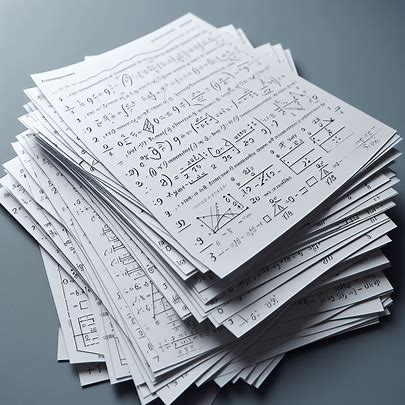Complex Numbers and Quadratic Equations: A Comprehensive Guide
Table of contents
- Complex Numbers and Quadratic Equations: A Comprehensive Guide
- Introduction
- Understanding Complex Numbers
- Solving Quadratic Equations with Complex Roots
- Unveiling the Mystery: What are Complex Numbers?
- Why are Complex Numbers Important?
- Elements of Mathematics Class 11 Solutions: Your Key to Success
- Beyond the Basics:
- 3. NCERT Solutions for Class 11 Maths Chapter 5
- Frequently Asked Questions (FAQs)
- Conclusion
Introduction
In Class 11 Elements of Mathematics solutions, Chapter 5 focuses on Complex Numbers and Quadratic Equations. This chapter bridges algebra and geometry, introducing students to complex numbers and their properties. Let’s explore the key topics and provide solutions to common problems.

Understanding Complex Numbers
Complex numbers are of the form a + bi, where a and b are real numbers, and i represents the imaginary unit (where i² = -1). Here are some essential concepts:
- Real Part (a): The real number a in a + bi.
- Imaginary Part (b): The coefficient of i in a + bi.
- Modulus (|z|): The distance of the complex number z from the origin in the complex plane.
- Argument (θ): The angle between the positive real axis and the line joining the origin to z.
Solving Quadratic Equations with Complex Roots
Quadratic equations of the form ax² + bx + c = 0 can have complex roots. The quadratic formula helps find these roots:
x=2a−b±b2−4ac
Unveiling the Mystery: What are Complex Numbers?
Complex numbers expand upon the notion of real numbers, introducing mathematical entities with additional properties and dimensions. Unlike real numbers that represent points on a number line, complex numbers involve imaginary unit “i,” defined as the square root of -1. They are expressed in the form a + bi, where a and b are real numbers, and “i” is the imaginary unit.
Why are Complex Numbers Important?
Complex numbers may seem abstract, but they play a crucial role in various scientific and engineering fields. Here are some applications:
- Electrical Engineering: Analyzing alternating currents and voltages.
- Quantum Mechanics: elucidates the actions and characteristics of particles at the subatomic level.
- Signal Processing: Understanding and manipulating signals in communication systems.
- Fluid Mechanics: Modeling fluid flow and wave propagation.
Elements of Mathematics Class 11 Solutions: Your Key to Success
Understanding the Basics:
A strong foundation is essential. Grasp the concept of the imaginary unit “i” and its properties (i^2 = -1). Learn how to represent complex numbers in rectangular form (a + bi) and polar form (r∠θ).
Operations on Complex Numbers:
Master addition, subtraction, multiplication, and division of complex numbers. These operations follow specific rules, involving real and imaginary components separately. Utilize the solutions provided in Elements of Mathematics Class 11 to practice and solidify your understanding.
Simplifying Complex Numbers:
Learn to simplify complex numbers by combining like terms (real and imaginary) and using the fact that i^2 = -1. Solutions in your textbook will guide you through various simplification techniques.
The Argument (Angle) of a Complex Number:
The argument (angle) of a complex number, denoted by θ, represents its direction in the complex plane. Understand how to find the argument using the formula tan θ = (b/a) and its applications.
Modulus (Absolute Value) of a Complex Number:
The modulus (absolute value) of a complex number, denoted by |z|, represents its distance from the origin in the complex plane. The formula for modulus is |z| = √(a^2 + b^2). Practice finding the modulus using solutions from Elements of Mathematics Class 11.
The Conjugate of a Complex Number:
The conjugate of a complex number z = a + bi is another complex number denoted by z̅ = a – bi. Understand the properties of conjugates and their applications in simplifying complex expressions.
Beyond the Basics:
Elements of Mathematics Class 11 Solutions delve deeper into advanced topics like:
- De Moivre’s Theorem: This powerful formula helps simplify complex number powers and find nth roots.
- Applications of Complex Numbers: Explore how complex numbers are used in solving quadratic equations, electrical circuits, and other real-world problems.
3. NCERT Solutions for Class 11 Maths Chapter 5
To master this chapter, refer to the NCERT textbook and practice problems. Additionally, you can access reliable solutions online:
- BYJU’S: BYJU’S provides step-by-step solutions for all NCERT problems, ensuring a clear understanding of concepts. Download the NCERT Solutions for Class 11 Maths Chapter 5 from their website.
- MathonGo: MathonGo offers free PDF solutions for Chapter 5. These solutions help you score well in both board exams and competitive tests.
- Allindiaentranceexam.com: It provides downloadable PDF versions of the NCERT solutions for Class 11 Maths Chapter 5. Access them during your exam preparation.
Download Elements of mathematics class 11 solutions chapter 5 – Click here
Frequently Asked Questions (FAQs)
Q1: What are complex numbers used for?
A1: Complex numbers find applications in electrical engineering, physics, signal processing, and control systems. They also play a important role in solving differential equations.
Q2: How do I express a complex number in polar form?
A2: To express a complex number z = a + bi in polar form, calculate its modulus (|z|) and argument (θ):
∣z∣=a2+b2
θ=tan−1(ab)
Then, write z as |z|e^(iθ).
Q3: Can a quadratic equation have only complex roots?
A3: Yes, a quadratic equation can have complex roots. For example, x² + 4 = 0 has roots ±2i.
Q4: How can I improve my understanding of complex numbers?
A: Visualize complex numbers on the complex plane. Practice solving problems from your textbook and explore online resources for interactive tutorials and visualizations.
Q5: What are some common mistakes to avoid while dealing with complex numbers?
A: Confusing “i” with a variable. Not separating real and imaginary parts during operations. Forgetting the property i^2 = -1. Utilize solutions in Elements of Mathematics Class 11 to identify and rectify these errors.
Q6: Are there any online resources to supplement my learning?
A: Yes! Numerous websites offer free video lectures, practice problems, and interactive quizzes for complex numbers. Utilize these resources alongside your textbook solutions.
Conclusion
Elements of Mathematics Class 11 Solutions serve as a valuable companion in your journey through complex numbers. By diligently practicing with solutions, understanding the concepts, and seeking help when needed, you’ll unlock the fascinating realm of complex numbers and excel in Class 11 Maths. Remember, consistent effort and a curious mind are key to mastering this chapter.







